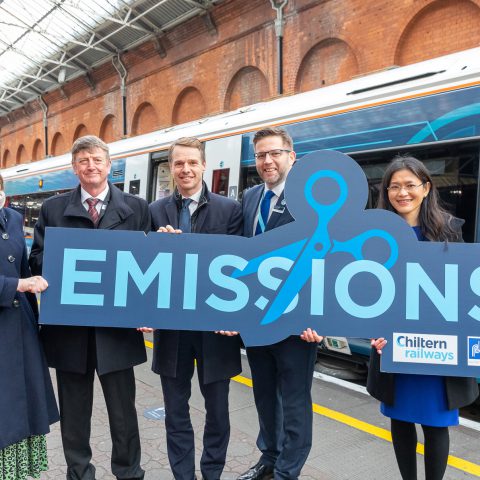Rolls-Royce, Porterbrook and Chiltern Railways towards rail decarbonization
Rolls-Royce, Porterbrook and Chiltern Railways are making rail history together with a climate-friendly world premiere: a hybrid diesel-battery-electric train that reduces CO2 emissions by up to 25% entered passenger service in the UK today for the first time.

Rolls-Royce, Porterbrook and Chiltern Railways are making rail history together with a climate-friendly world premiere: a hybrid diesel-battery-electric train that reduces CO2 emissions by up to 25% entered passenger service in the UK today for the first time. The so-called HybridFlex train is powered by two mtu Hybrid PowerPacks and is operated by Chiltern Railways on the route between London Marylebone and Aylesbury. Together with the leasing company Porterbrook and Chiltern Railways, Rolls-Royce has converted a Class 168 DMU into the HybridFlex train. The partners are proving that existing rail vehicles can be used in a climate-friendly way without the need to install complex and expensive new infrastructure. It is the world’s first regular passenger operation with mtu Hybrid PowerPacks, of which 13 have already been ordered.
Lei Berners-Wu, Vice President Global Industrial Business at Rolls-Royce business unit Power Systems, said: “It makes us proud to bring this groundbreaking propulsion solution, which we have continuously further developed over the past years, into regular service together with our partners. The immense CO2 savings based on existing and proven technologies are an important step on the road to climate neutrality, on which we are moving forward together with our customers in all applications.”
Rolls-Royce: the mtu Hybrid PowerPack combines the advantages of battery and diesel-powered trains
Trains with mtu Hybrid PowerPack can also be operated on non-electrified routes purely electrically and thus locally emission-free, for example in urban areas or in stations. In pure electric operations, drive noise is reduced by about 75 percent. The CO2 emissions of the train are 25% lower than those of a train with conventional diesel drive. This is made possible by the recuperation of braking energy, which is stored in a battery, the so-called mtu EnergyPacks. In the HybridFlex, the batteries are mounted under the floor of the vehicle. A new type of driver assistance system, the mtu Intelligent Drive Manager, is being used on this train for the first time. It ensures that the drive system automatically switches to all-electric operation in emission- and noise-sensitive areas such as cities or train stations. The driver does not have to actively intervene.









